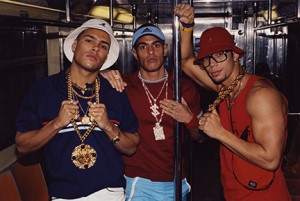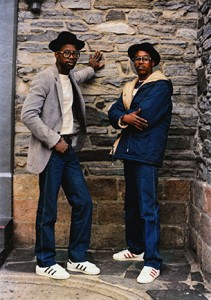Only recently was I lamenting the dearth of street fashion photography in our collection to a colleague, when we were put in touch with the visionary street and fashion photographer, Jamel Shabazz. It took us about a millisecond to ponder his query: ‘Would we be interested in receiving a donation of some of his photographs?’ The answer was ‘yes!, yes!… a thousand times over, yes!’ We are delighted to now call SPARC home to fifty of Shabazz’s 11″x14″ photographs from 1980-2012. The specific images were selected by the photographer himself for their relevance to the fashion and design-centric mission of FIT, and represent both his work documenting urban street culture around the world as well as his work as a commercial fashion photographer, which has appeared in magazines such as TRACE, Suede, VIBE, Elle, Vogue and Jalouse.
A native of Brooklyn, born in 1960, Shabazz’s interest in photography was nurtured as a teen by his father, and he quickly developed a signature style documenting the urban landscape of his daily life—often the African American experience at the time of a burgeoning and blossoming hip hop culture. In the words of Fab 5 Freddy, who wrote the introduction to Shabazz’s photographic survey of his work Back in the Days, “These are the faces of the generation that gave birth to hip hop—not only the most dominant and inclusive youth culture in history, but also the most stylishly innovative and consistently advanced generation since the Rock ‘n Roll era… If among the many emotions you feel while viewing these photos, cool comes to mind, here’s why—back then, cool was all about having the right flavor and savoir faire.”
Shabazz has actively been capturing the cool and the chic in city streets for more than forty years, making him an important, pioneering figure in the only recently-ubiquitous genre of street fashion photography. The fact that he often leaves his subjects with the parting words, “Everything you do today will reflect upon your future,” underscores his work as a teen educator/advocate and his vision for the work, which he sees as “an opportunity not only to preserve history, but to also give those who stood in front of my camera the chance to see themselves and their peers” as poignant participants in a vibrant, thriving scene.




